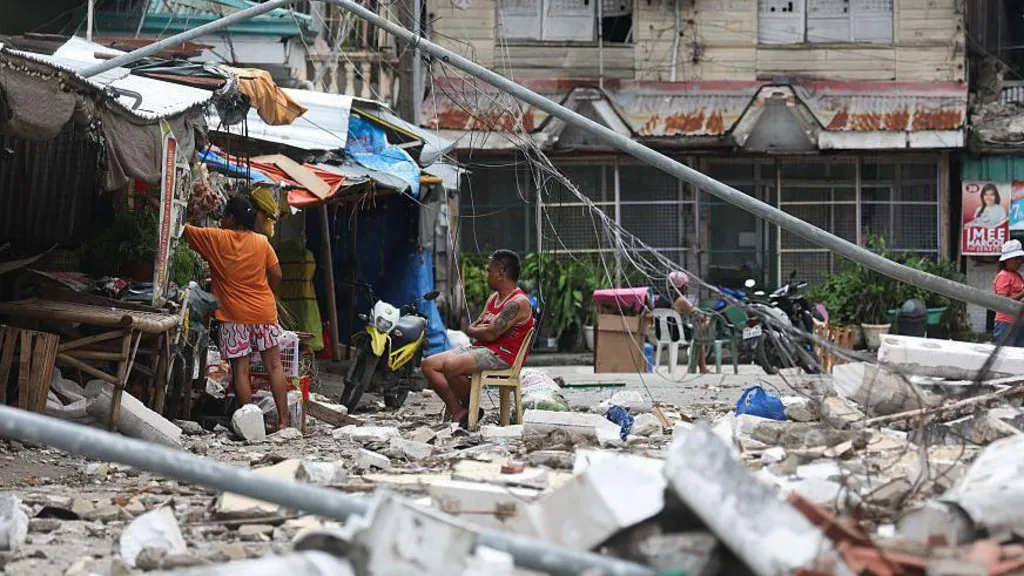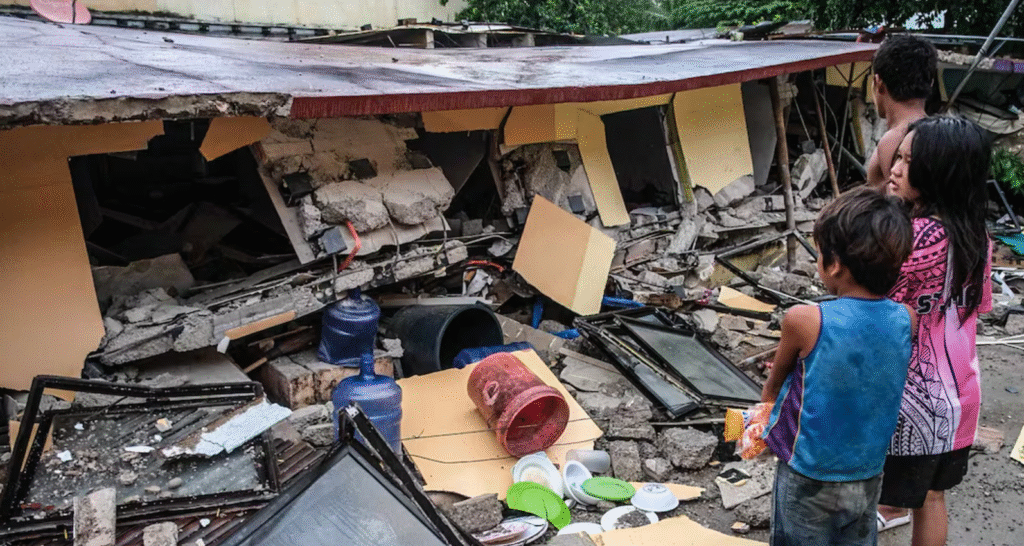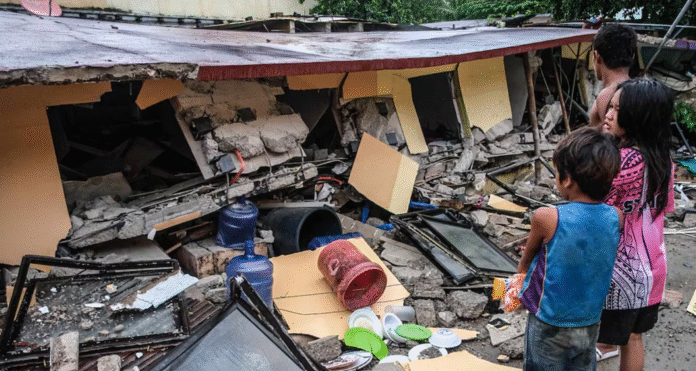Philippines Earthquake Tragedy: 69 Dead, Shocking Details Revealed
The Philippines earthquake tragedy has left the nation in shock after a devastating 6.9-magnitude tremor struck the central province of Cebu late Tuesday. Official reports confirm at least 69 lives lost and dozens injured, while thousands of residents were forced to spend the night outdoors amid powerful aftershocks.
The deadly quake highlights the country’s vulnerability to natural disasters and once again raises questions about infrastructure safety in regions prone to both earthquakes and typhoons.

The Earthquake Strikes Cebu Province
The Philippines earthquake tragedy was centered in Bogo City, Cebu province, one of the country’s most populated regions. As the quake ripped through buildings and homes, residents fled into the streets for safety. Many were left without power and water, while families huddled together, traumatized by the sudden disaster.
Eyewitnesses reported the chilling sounds of children crying, debris crashing, and people desperately calling for help. One resident described the scene as “heartbreaking and terrifying,” with many fearing additional tremors.
Victims of the Philippines Earthquake Tragedy
Most of the Philippines earthquake tragedy victims were from Bogo, a small town near the epicenter. Images show rows of body bags lining the streets, alongside makeshift tent hospitals treating hundreds of injured survivors.
Officials revealed that seven of the deceased had been living in a resettlement village originally built for victims of Typhoon Haiyan, a stark reminder of how frequently natural disasters devastate the Philippines.
Aftershocks and Ongoing Dangers
The horror did not end with the initial quake. By Wednesday night, Cebu experienced another aftershock measuring 4.7 on the Richter scale. Residents described the ground shaking once again, forcing many to remain outdoors in fear of collapsing buildings.
According to the Philippines disaster mitigation agency, the two-story school buildings and old churches in Cebu are particularly at risk, with several structures already partially collapsed. Footage even captured the dramatic moment a centuries-old church bell tower swayed before crumbling to the ground.
Search and Rescue Efforts
Authorities are racing against time to save survivors trapped beneath rubble. The National Police and Fire Bureau confirmed that their priority remains search and rescue, followed by restoring electricity and distributing relief supplies.
Rescue teams face enormous challenges, including:
-
Collapsed bridges and cracked roads, blocking access.
-
Fallen power lines, making communication difficult.
-
Unstable buildings, which continue to threaten both survivors and rescuers.
Despite these challenges, local officials have called for more volunteers with medical training to assist in treating the injured.
A Nation in Mourning
The Philippines earthquake tragedy comes just days after the nation endured two back-to-back typhoons that claimed more than 20 lives. For many communities, this disaster feels like yet another crushing blow in a relentless cycle of natural calamities.
Relatives of victims have been seen camping outside collapsed buildings, waiting anxiously for news of their loved ones. Mothers, fathers, and children cling to hope as rescuers dig through layers of concrete slabs in dangerous “pancake” structures.
Churches and Historical Sites Damaged
Cebu, one of the first islands colonized by Spain in the 1500s, is home to many historic Catholic churches. The archbishop of Cebu has urged people to stay away from religious sites until proper inspections are carried out.
Several churches, some centuries old, have suffered severe structural damage. The loss is not only physical but also cultural, striking at the heart of the island’s history and faith.
The Philippines on the Ring of Fire
The Philippines earthquake tragedy is part of a larger pattern. The country lies on the Pacific Ring of Fire, a seismically active region prone to frequent earthquakes and volcanic eruptions. With thousands of islands and millions of residents, the nation is one of the most disaster-prone in the world.
Combined with its exposure to typhoons sweeping across the Pacific Ocean, the Philippines faces a double threat that leaves communities constantly vulnerable.
International and Local Response
The disaster has already drawn international attention. Relief agencies, including the Red Cross, have mobilized to provide support, while the Philippines National Disaster Risk Reduction and Management Council (NDRRMC) continues to verify casualties and assess damages.
Local leaders, including Cebu officials, have declared a state of calamity, which allows for quicker access to funds and resources. This measure is aimed at ensuring food, water, and shelter reach those in desperate need.

The Struggle Ahead
Rebuilding from the Philippines earthquake tragedy will not be easy. With infrastructure already weakened by previous storms and quakes, experts warn that more investment is needed in disaster-proof housing, bridges, and public facilities.
Communities in Bogo and other affected areas are expected to face weeks, if not months, without normal access to electricity, water, or safe housing. For families who have already survived typhoons, the repeated trauma takes a toll not only on physical resources but also on mental health.
Conclusion
The Philippines earthquake tragedy has once again exposed the fragility of life in one of the world’s most disaster-prone nations. With 69 confirmed dead, dozens injured, and thousands displaced, Cebu and surrounding provinces face an uphill battle to recover.
But amid the devastation, stories of survival and resilience continue to emerge, reminding the world of the courage of the Filipino people. As rescue operations continue, one thing is clear: the Philippines must prepare not just for recovery, but for prevention and stronger disaster management in the years ahead.

